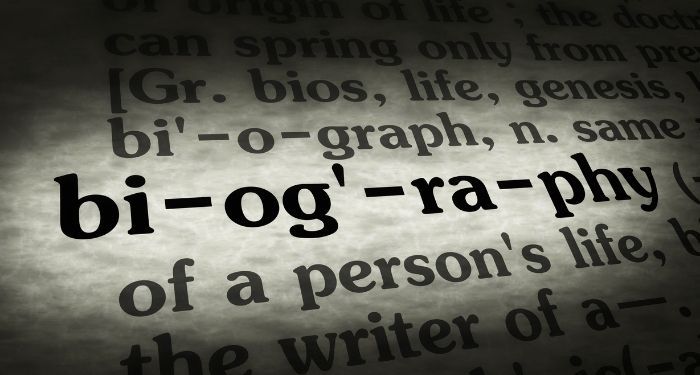
How to Write a Compelling Writer Bio + Examples
Written by Monica Shaw
When writers create an online writing portfolio with us, one of the things we say they should do first is update their home page. This is a natural place for a writer to share a short bio of themselves and their work. This should capture the attention of the reader, and compel them to learn more.
That said, this is also an area where a lot of writers struggle. So today I wanted to share some tips for creating a compelling introductory statement on a homepage that makes a strong impression on visitors to their writing portfolio. Here are some tips to help you explain yourself in a captivating way. And this doesn't just work for your home page, you can use these tips on LinkedIn, Substack, and anywhere you're sharing your writer bio with the world:
-
Craft a Clear and Concise Elevator Pitch:
- Summarize who you are and what you write about in a concise manner. Imagine you have only a few seconds to capture someone's attention. See Harvard's guide to writing an elevator pitch for inspiration.
-
Highlight Your Unique Selling Proposition (USP):
- Identify what sets you apart from other writers. What unique perspective, style, or expertise do you bring to your writing? Clearly communicate this in your introductory statement. Learn more: how to discover your USP as a writer.
-
Inject Personality / Be Authentic:
- Let your personality shine through your words with descriptive language; paint a vivid picture of YOU with your words. Whether you're humorous, insightful, or serious, infuse your unique voice into the introductory statement to make it more engaging. We're writers; this should be easy. But it not often is. This article might help: the importance of finding your voice.
-
Show, Don't Just Tell:
- Show how your work benefits clients through compelling mini case-studies or stats. Maybe you've helped a client increase their organic search visitors through quality SEO-driven content, or helped increase conversions by writing compelling persuasive content. If you have a compelling stat to share about your success rate, showcase it front and centre on your homeage.
-
Consider Your Target Audience:
- Tailor your introductory statement to resonate with your target audience. Speak directly to the needs and interests of potential clients and hiring persons.
-
Address Pain Points or Needs:
- Identify common pain points or needs of your target audience and address how your writing can provide solutions or valuable insights.
-
Try Using a Compelling Hook:
- Start your introduction with a hook that grabs attention. This could be a thought-provoking question, a bold statement, or a captivating quote. See Carol Tice's hook in the writer bio example below.
-
Emphasize Your Passion:
- Convey your passion for writing and the topics you cover. Passion is contagious, and it can make readers more enthusiastic about exploring your portfolio.
-
Provide a Sneak Peek
- Give readers a glimpse of what they can expect from your portfolio. Mention a current project, upcoming writing, or any exciting news to create anticipation. Or highlight your best writing samples on your homepage (our writing samples manager lets you do this easily by clicking a tickbox on any writing sample you want to feature on your home page).
-
Optimize for Readability:
- Ensure that your introductory statement is easy to read. Use short sentences, bullet points, or subheadings to break up the text and make it visually appealing. Don't use funky fonts - our writing portfolios only offer the option to use the most readable web-friendly fonts to make this easy for you.
Writer Bio Examples I love
LinkedIn is an awesome resource for studying the craft the writer bio. Look out for writers with huge followings; that's usually a good sign that they've nailed their bio. Here's a few writers I follow whose bios I like:
Liz Heflin, Writer, Editor, Business Coach. Her bio focuses on why businesses need her skills.
Rachel Meltzer, Freelance Writer and Writing Coach. Her bio showcases some of companies she's worked with, some well known names which attests to the writer's ability.
Carol Tice, Ghostwriter. Her bio does an excellent job of showcasing compelling case studies that prove the efficacy of her work.
Remember that your homepage is the first impression readers have of you, so make it memorable. Test different versions of your introductory statement to see what resonates best with your audience. Keep it updated to reflect any changes in your writing focus, style, or achievements. Ultimately, a compelling introduction should leave visitors eager to explore more of your writing portfolio.
FAQs
How can a writer balance professionalism and personality in their bio to engage a diverse audience?
In crafting a writer bio, striking a balance between professionalism and personality is key. You want to present your qualifications and achievements while also giving a glimpse of your personality to make your bio relatable and engaging. This blend helps potential clients or readers connect with you on a personal level.
Are there specific strategies to optimize a writer's bio for SEO purposes?
For SEO optimization, incorporating relevant keywords related to your writing expertise and genre can make your bio more visible online. Using SEO strategies like keyword placement and metadata can enhance your bio's searchability, making it easier for potential clients or readers to find you.
What are the best practices for updating a writer bio, and how often should it be done to reflect a writer's evolving career?
Regular updates to your writer bio are essential to reflect your career's growth and any new achievements or experiences. Reviewing and updating your bio annually or after significant accomplishments ensures it remains current and accurately represents your professional journey.
Ready to share your online writing portfolio?
Don’t forget, we’re on hand to help you launch your portfolio during your 30 DAY FREE TRIAL.
Get started for FREE.jpeg)